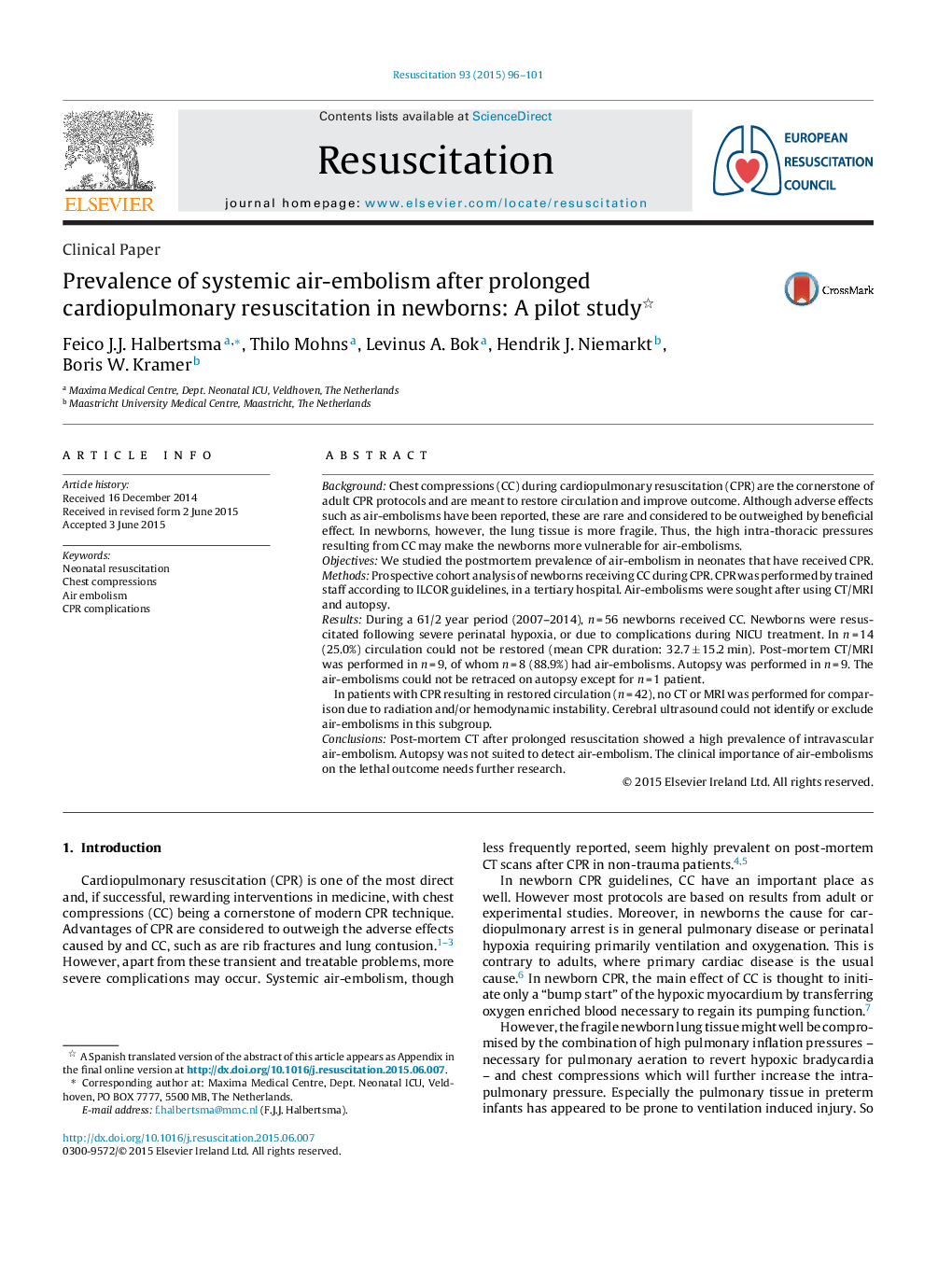| Article ID | Journal | Published Year | Pages | File Type |
|---|---|---|---|---|
| 5997296 | Resuscitation | 2015 | 6 Pages |
BackgroundChest compressions (CC) during cardiopulmonary resuscitation (CPR) are the cornerstone of adult CPR protocols and are meant to restore circulation and improve outcome. Although adverse effects such as air-embolisms have been reported, these are rare and considered to be outweighed by beneficial effect. In newborns, however, the lung tissue is more fragile. Thus, the high intra-thoracic pressures resulting from CC may make the newborns more vulnerable for air-embolisms.ObjectivesWe studied the postmortem prevalence of air-embolism in neonates that have received CPR.MethodsProspective cohort analysis of newborns receiving CC during CPR. CPR was performed by trained staff according to ILCOR guidelines, in a tertiary hospital. Air-embolisms were sought after using CT/MRI and autopsy.ResultsDuring a 61/2 year period (2007-2014), n = 56 newborns received CC. Newborns were resuscitated following severe perinatal hypoxia, or due to complications during NICU treatment. In n = 14 (25.0%) circulation could not be restored (mean CPR duration: 32.7 ± 15.2 min). Post-mortem CT/MRI was performed in n = 9, of whom n = 8 (88.9%) had air-embolisms. Autopsy was performed in n = 9. The air-embolisms could not be retraced on autopsy except for n = 1 patient.In patients with CPR resulting in restored circulation (n = 42), no CT or MRI was performed for comparison due to radiation and/or hemodynamic instability. Cerebral ultrasound could not identify or exclude air-embolisms in this subgroup.ConclusionsPost-mortem CT after prolonged resuscitation showed a high prevalence of intravascular air-embolism. Autopsy was not suited to detect air-embolism. The clinical importance of air-embolisms on the lethal outcome needs further research.
